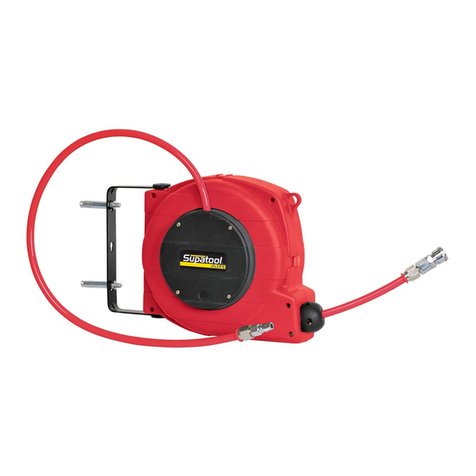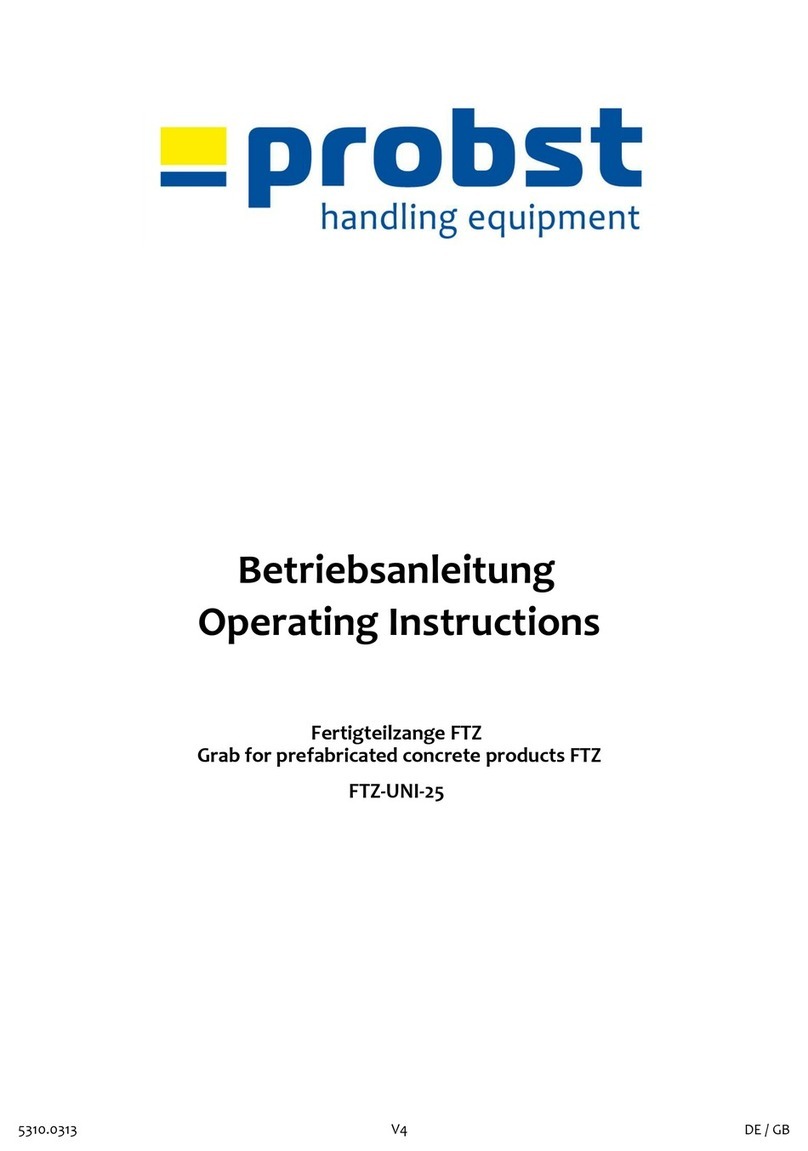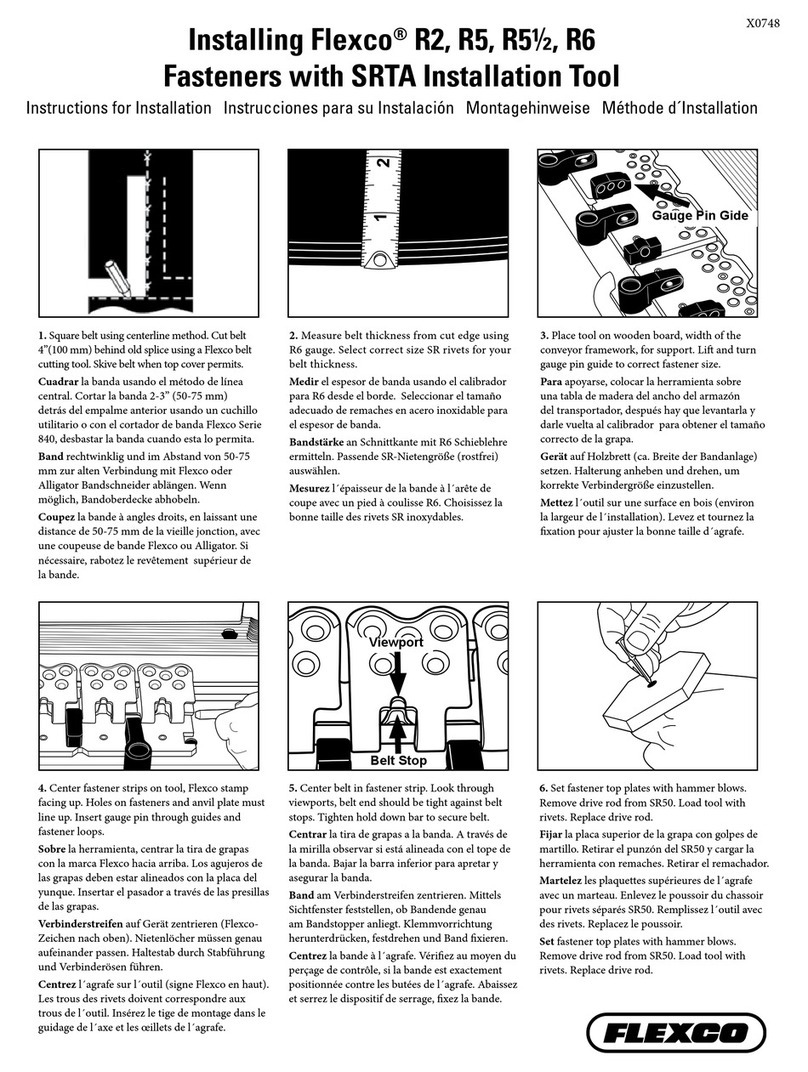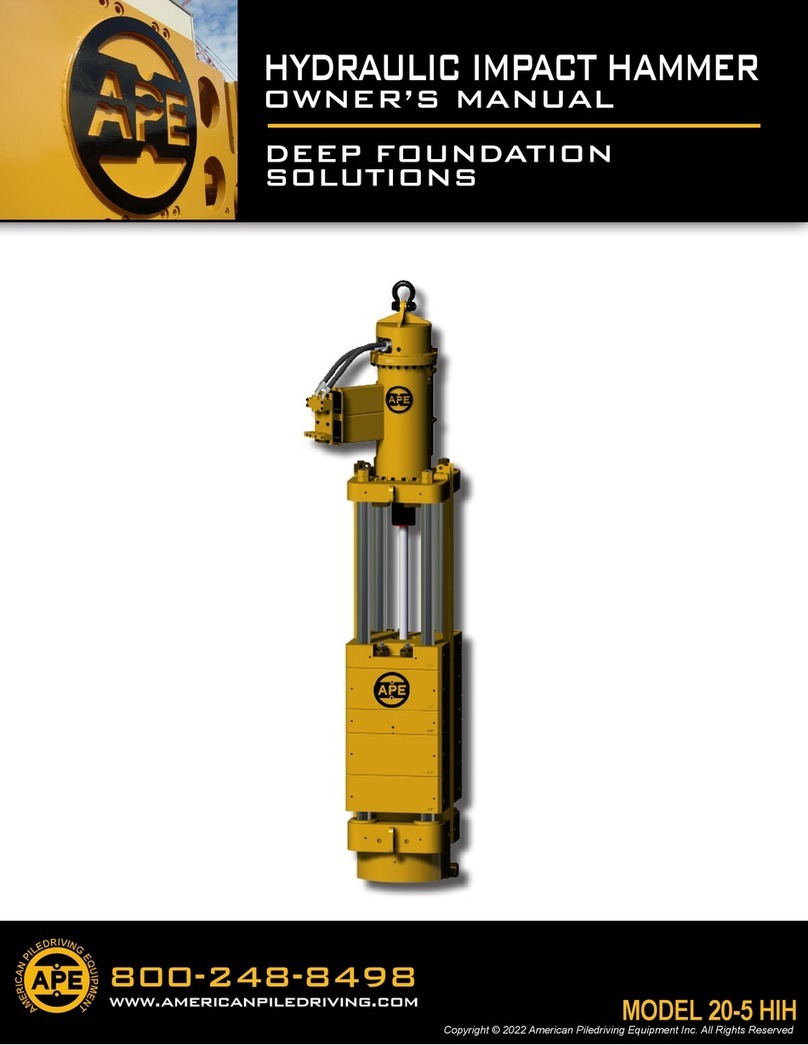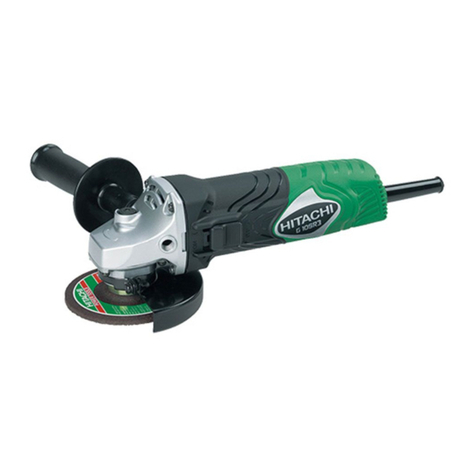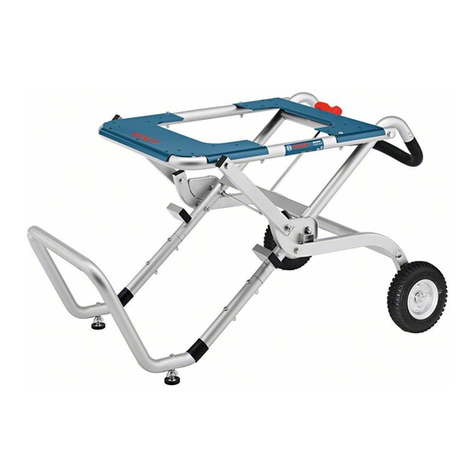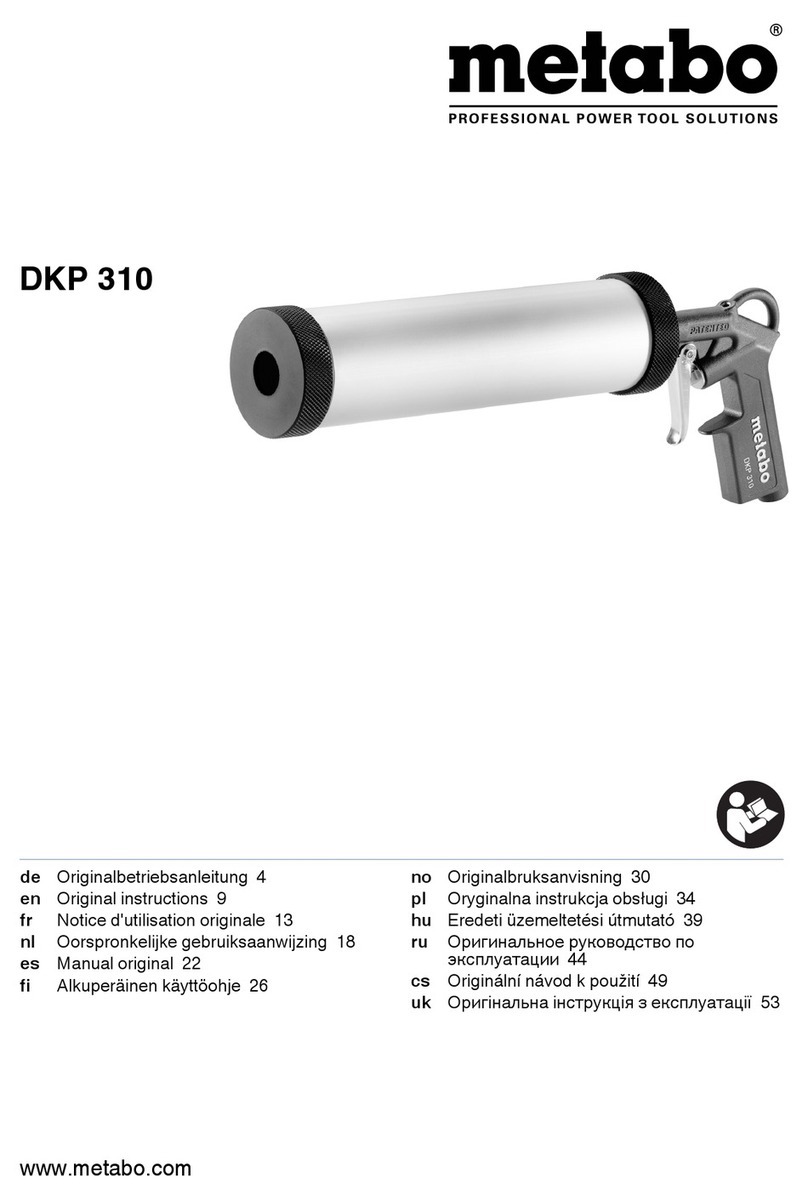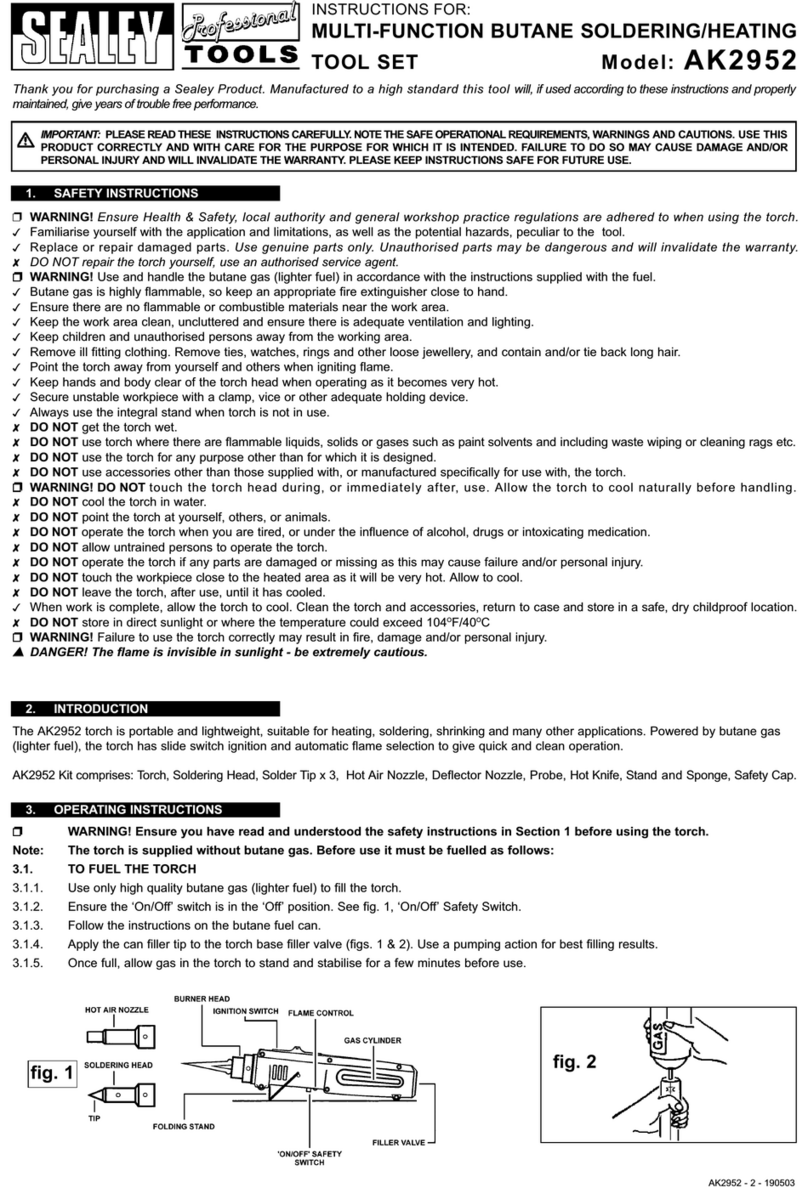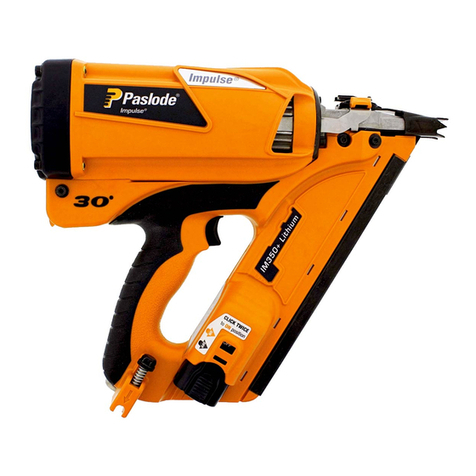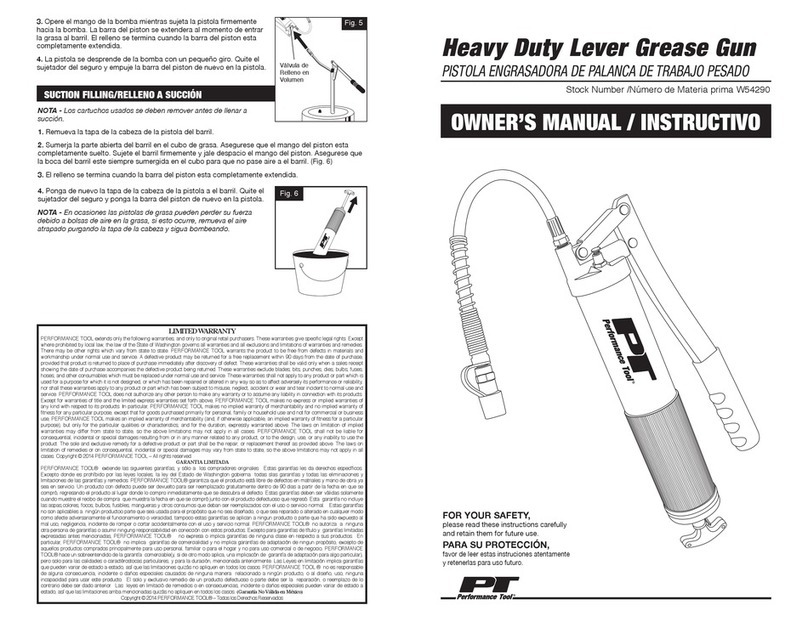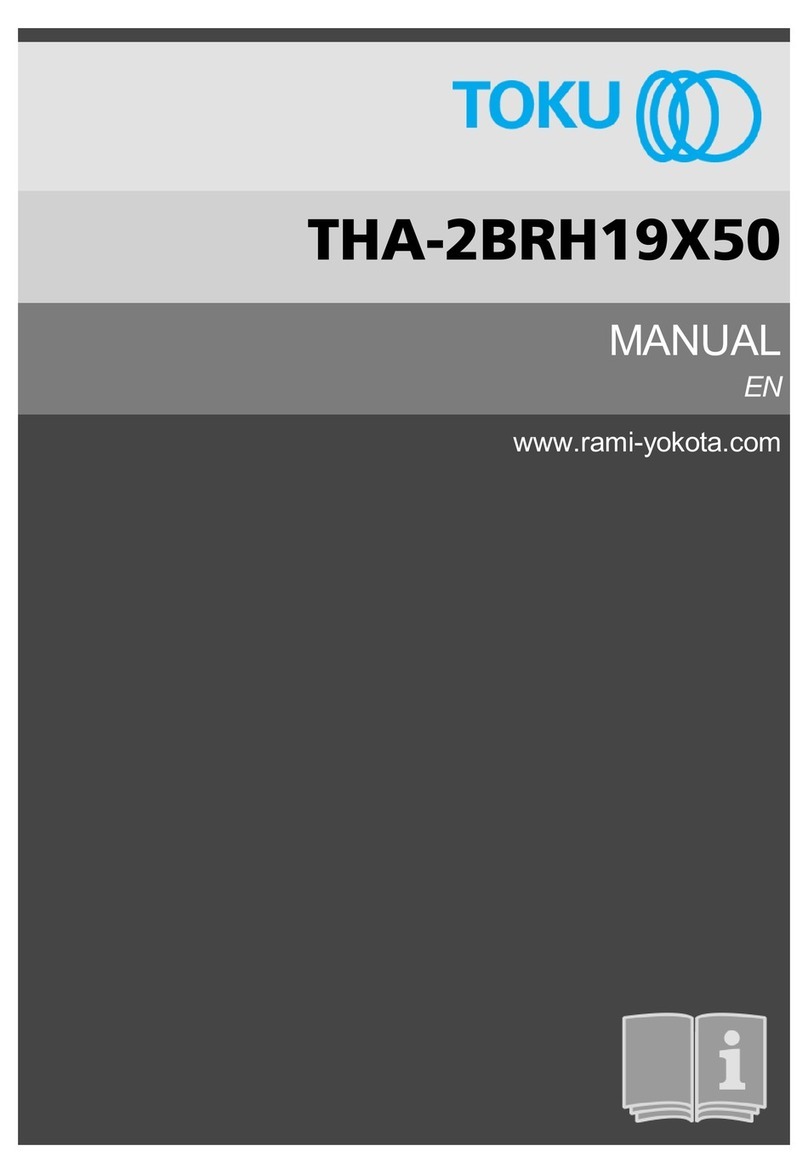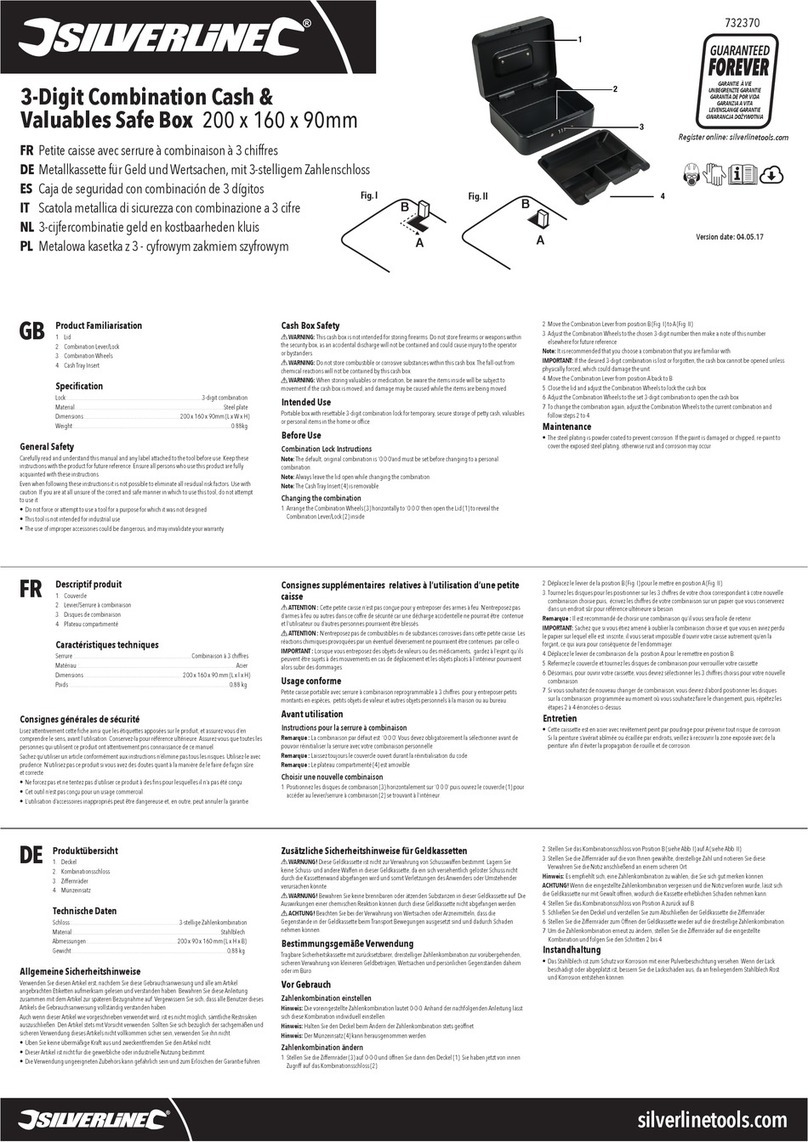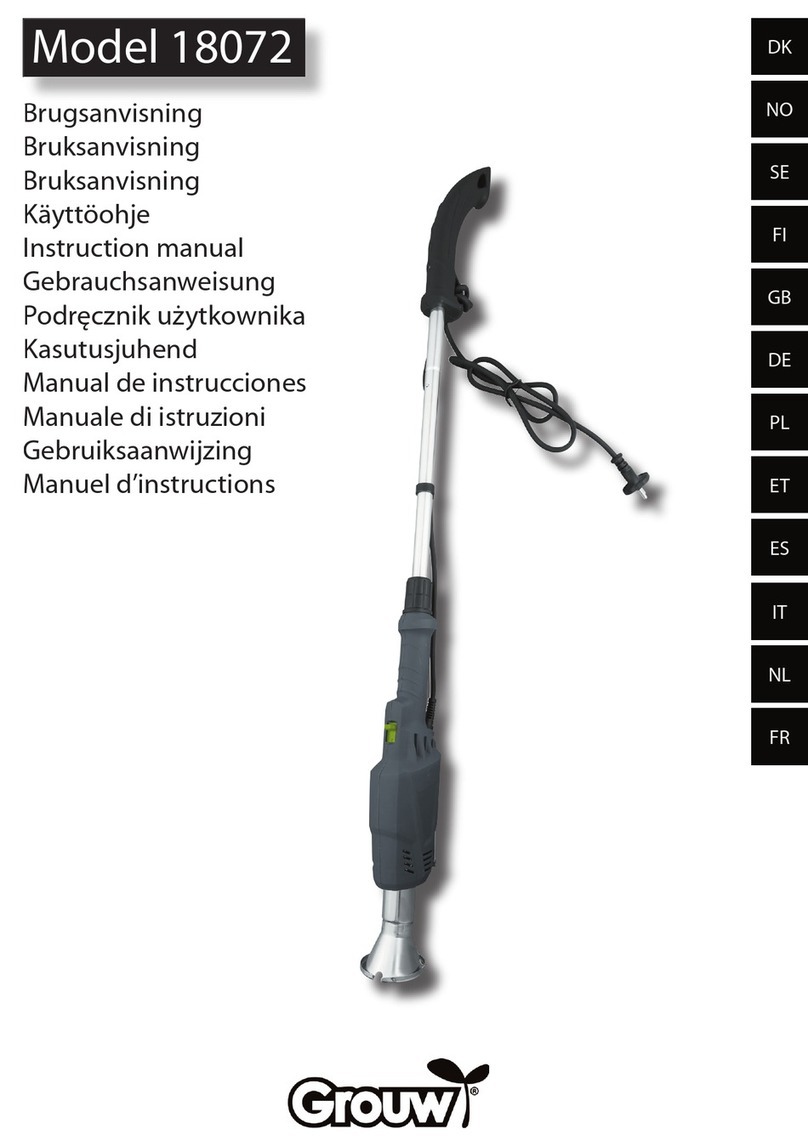Trelawny Trident Neptune User manual

Trident Neptune
Operation and Maintenance Manual
www.trelawnyspt.co.uk



OPERATION
Foreword
Thank you for your purchase of the
TRELAWNY TRIDENT NEPTUNE DE-
SCALING MACHINE.
This manual contains the necessary
maintenance information for you to
ensure proper operation and care for this
machine.
See also the manual that is supplied
by the motor manufacturer.
It is essential for you to read through
these manuals thoroughly.
In the unlikely event that you experience
problems with your Trident Neptune
please do not hesitate to contact your
local Trelawny dealer or agent.
We always welcome feedback and
comments from our valued customers.
General Information
Before operating, performing
maintenance or repairing the Trident
Neptune this manual must be read and
understood by the operator, if in any
doubt, ask your supervisor before using
this equipment.
Local safety regulations must be
followed at all times.
Failure to follow these instructions could
result in damage to the machine and/or
personal injury.
Trelawny SPT Limited disclaims all
responsibility for damage to persons or
objects arising as a consequence of
incorrect handling of the machine, failure
to inspect the machine for damage or
other faults that may influence the
operation prior to starting work, or failure
to follow the safety regulations listed or
applicable to the job site.
This machine is primarily designed for
the removal of heavy rust or paint from
steel surfaces. Typically used on ships
decks and superstructures.
It can be used both indoors and out.
This machine must not be used in a
fixture.
The electric motor used has dual 50 or
60 hertz compatibility, no modification is
required, it can be converted easily for
use on a 110v or 220v electricity supply.
See motor plate for further information.
Risk of Hand-arm
Vibration injury
These tools may cause Hand-arm
Vibration Syndrome injury if their use is
not adequately managed.
We advise you to carry out a risk
assessment and to implement measures
such as; limiting exposure time [i.e.
actual trigger time, not total time at
work], job rotation, ensuring the tools are
used correctly, ensuring the tools are
maintained according to our
recommendations, and ensuring that the
operators wear personal protective
equipment [PPE] particularly gloves and
clothing to keep them warm and dry.
Employers should consider setting up a
programme of health surveillance to
establish a benchmark for each operator
and to detect early symptoms of vibration
injury.
We are not aware of any PPE that
provides protection against vibration
injury by attenuating vibration emissions.
See ‘Specifications’ section for
vibration emission data.
Further advice is available from our
Technical Department.
We strongly advise you to visit the U/K
Health & Safety Executive website http://
www.hse.gov.uk/vibration.
This site provides excellent advice and
information on HAV and currently,
includes a Hand-arm Vibration Exposure
Calculator that is easy to use to work out
the daily vibration exposure for each of
your operators.
Cutter Types &
Applications
Cutter Wheels
These the most aggressive, they are
designed for the rapid removal of very
heavy rust and scale and are also
suitable for the rapid removal of two part
epoxy paint coatings.
Chipping Leaves
These are fitted as standard, they are
designed for the rapid removal of very
heavy rust and scale, they are less
aggressive than cutter wheels, and
should provide a surface finish suitable
for coating with most modern paint
systems.
Wire Brush
These are the least aggressive of all,
and are generally used for the removal of
light rust and paint, or for final finishing to
provide a surface suitable for painting.
There are various types available, see
parts list for further information.
Safety
FACE MASK,
EAR DEFENDERS,
SHATTERPROOF GLASSES,
GLOVES, HELMET,
WEAR SAFETY BOOTS, and any other
personal protective equipment required
for the working conditions.
Avoid loose clothing; this may become
trapped in moving parts and cause
serious injury.
ENSURE THAT THE WORK PLACE IS
WELL VENTILATED.
Avoid operating engine-powered
generators or air compressors used to
power the Trident Neptune in an
enclosed area, since engine exhaust
gases are extremely poisonous.
Ensure that all electrical cables and
connections are in good condition and
that a good earth connection is
established.
Do not use the machine if any electrical
insulation appears to be damaged.
The tool guard is supplied to protect the
operator from flying particles.
Always ensure that it is fitted.
Do not modify the Trident Neptune De-
Scaler in any way.
Do not apply excessive pressure – let
the Scaler do the work .
The electric motor is rated as splash
proof, ensure that the electrics are not
exposed to excessive moisture.
IMPORTANT
Thermal protection:
If the motor overheats the thermal
protector will open the motor circuit,
stopping rotation of the tool.
If this has occurred it is imperative that
the motors power switch is switched
to off, wait until the motor has cooled
sufficiently.
After the motor has cooled, the thermal
protector will reset automatically.
Retry again after 15mins.
If it trips out again investigate the cause
before continuing.
(It maybe caused by a bearing failing or
incorrect grease used in the flexible
shaft, to much force being used etc.)
DO NOT
OPERATE ELECTRIC
VERSIONS IN WET
CONDITIONS.

Before Use
Fit a suitable electric plug for outdoor
use to the cable.
Colour code as follows: -
Blue neutral
Brown live
Green earth
Important: Please ensure the motor is
set to the correct voltage (110v or 120v)
If there is a need to change the setting of
the voltage, remove back plate and
cover from the rear of the motor and re-
connect the leads as illustrated: -
OPERATION
220v Motors
Take particular care when using 220v
machines, ensure that the electrical
supply is earthed and that breakers and
fuses are correct for the loading.
The 220v motor requires the minimum of
a 13amp, 220v power supply. Always
use the shortest possible length of
extension cable. It is recommended that
a residual current device (RCD) or (RCB)
tripping at 30mA is fitted in the supply.
Air Models;
The correct air pressure for this
machine is to 6.2bar (90psi). Do not let
the operating pressure fall below 5.5bar
(80p.s.i.) or rise above 6.9bar (100 psi)
absolute maximum.
Ensure that no moisture (condensation)
is present in the air hose.
Check the security of all hoses clamps
and fittings.
Check that there is sufficient air tool oil in
the inline lubricator’s reservoir.
The air motor requires a minimum of
70cfm of free air delivered (not
displaced, as given by some compressor
manufactures).
Assembly of Flexible Drive
Align D’ shaped connector on the flexible
drive with that on the motor unit and
push home. Secure the flexible drive
with the brass locking collar, tighten by
hand.
Select the appropriate scaling head for
the application and screw into the flexible
drive, initially by hand and then fasten
securely using the supplied 24mm
spanners. Fit the hand guard onto the
end of the dumbbell handle and secure
with the two nuts & bolts and finally
tighten using the two supplied spanners.
Starting
Electric Powered Machines
Inspect the supply cable:
Check that no damage has been caused
to the outer casing and that there are no
exposed or loose wires.
Obtain the assistance of a qualified
electrician if a fault is found.
Do not use the machine until all faults
have been rectified.
Check that the cable is not running
across sharp or jagged edges and that it
is not in contact with any liquid.
Air Powered Machines
Check the security of all hoses clamps
and fittings, and that the supplied air
pressure is correct at 6.2bar (90psi).
Check that there is sufficient air tool oil in
the lubricator’s reservoir.
To Start;
Holding the dumbbell handle securely
and away from your body and clothing,
turn the electric toggle switch or air tap
to ‘on’.
For Low Voltage 110v Setup:
Disconnect the wire labelled “2” from the
terminal numbered (4) and connect it to
terminal numbered (L2).
Disconnect the wire labelled “J” from
terminal numbered (3) and connect it to
terminal numbered (4).
For High Voltage 220v Setup:
Disconnect the wire labelled “J” from
terminal numbered (4) and connect it to
terminal numbered (3).
Disconnect the wire labelled “2” from the
terminal numbered (L2) and connect it to
terminal numbered (4).
110v Motor
The motor requires the minimum of a
16amp, 110v power supply.
Always use the shortest possible length
of extension cable. To avoid voltage drop
the cable must be a minimum core wire
size of 2.5mm2 cross-section.
Maximum length of cable is 30 meters.
Use a centre tap transformer with a
continuous rated output of at least 1.5va.
In practice this means that a 3.0kva
transformer will be required. Be aware
that manufacturers have different
methods of rating their equipment. All
transformers and extension cables
should be fitted with 16amp plugs and
sockets. The 240v supply to the 110v
transformers ideally should be rated to at
least 13amp if supply problems are to be
avoided.
Servicing
Always disconnect power supply from
the tool before performing any servicing
work.
Lubrication
Unscrew cap (2) to expose front ball race
(3) using special tool provided. Please
note this is fitted with a left-hand thread.
Apply a liberal amount of grease to the
front bearing.
Unscrew Dumbbell body (5) from
hexagonal nut (10) (left-hand thread) and
draw apart. Inner coupling is now
exposed and may be unscrewed from
spindle (1) (right-hand thread).
The flexible inner shaft (16) may now be
withdrawn from motor end of the rubber
casing. Apply liberal amount of grease to
the rear bearing and inner shaft.
NOTE: It is recommended to use one of
the following lubricants, or an equivalent.
BP ENERGREASE LC
CASTROL LMX
ESSO BEACON EP2
RAMONOL WHITE GREASE
Cleaning
If the operation of the Trident Neptune
Scaler becomes sluggish or if the electric
motor thermal overload protection
continually has to reset, it is
recommended that the tool be lubricated
as indicated in the previous paragraph.
Dismantling
Changing Scaling Head.
Using spanners provided unlock the
existing head from the dumbbell handle
spindle (1) and unscrew until free. Fit the
alternative scaling head or wire brush to
the spindle and fasten until hand tight.
Hand Guard Removal
Unlock and remove both sets of nuts,
bolts and washers (7). Withdraw the
clamp (8) from the dumbbell handle (5)
and remove the hand guard (9).
Removing Brush Arbor from Wire
Brush
Secure the centre bolt head (29) in vice
and remove the hexagonal nut (19) and
washer (20). Withdraw the wire brush
(30) and the bottom washer (20).
Removing Chipping Leaves
Secure centre bolt head (27) in vice and
remove hexagonal nut (19) and washer
20). Remove side plate (28) withdraw the
washers (22) and chipping leaves (23)
and check for any sign of wear on the
leaf pins (24).
Remove the other side plate (28) from
the centre bolt and check both side
plates for signs of wear.

MAINTENANCE
Removing Cutter Wheels
Secure bolt head (18) in vice and
remove hexagonal nut, (19) washer, (20)
and side plate (21). Withdraw cutter
wheels (25) and check for signs of wear
on cutter wheel pins (26). Remove
bottom side plate from centre bolt and
check both side plates for signs of wear.
Removing Dumbbell Handle
Secure dumbbell handle (5) in a soft
jawed vice and unscrew front cap (2)
with the special tool provided (left-hand
thread). Unscrew the dumbbell body (5)
from the threaded hexagonal adaptor
(10) (left-hand thread) and draw apart.
Ball Race Removal
Unscrew front cap (2) with special tool
provided (left-hand thread) to expose
front ball race (3). Unscrew dumbbell
body (5) (left-hand thread) from large
threaded hexagonal adaptor (10) (left
hand thread) and draw apart.
The Inner shaft with its spanner flats are
now exposed and can be unscrewed
from spindle (1) (right-hand thread).
Remove the spindle from the dumbbell
housing. Both ball races (3) and (4) are
now exposed and can be removed.
Removing Inner Shaft from Outer
Casing
Disconnect Inner shaft (16) from motor
unit (14/15). Remove dumbbell handle
and hand guard as previously instructed.
The inner shaft (16) can now be
withdrawn from the motor end of outer
drive casing.
Removing Nose Piece
Remove flexible drive from motor unit as
previously instructed. Remove dome
headed screws (12) from the motor
casing and withdraw nose piece (13).
Assembly
Ensure all parts are clean. If the Scaler is
being fully serviced, replace all ball
races.
Fitting the Nose Piece
Align the holes in the nose piece (13)
with those on the motor unit (14/15). Fit
and fasten the three dome head screws
(12).
Inner Shaft/Outer Casing Assembly
Insert Inner (16) into the motor end of
rubber casing after ensuring that the ball
race (11) has been packed with grease.
The inner shaft needs to be pre-
tensioned.
Screw the threaded dumbbell spindle
screw onto the inner shaft and pull the
end out of the outer shaft until the
spanner flats on the inner shaft are
visible.
Insert the supplied spanner into the flats
and tighten the spindle onto the inner
shaft.
Fitting of Dumbbell Handle
Fit both ball race bearings into the
corresponding bores of the dumbbell
handle. Ensure that the ball races are
fitted correctly and have been packed
with the recommended grease.
Fit the dumbbell handle onto the large
threaded hexagonal adaptor (10) on the
outer drive casing (6) and secure (left-
hand thread).
Fit locking cap (2) to front of dumbbell
handle ensuring that the recessed holes
are on the exposed side to enable
locking with special tool provided.
Assembly of Scaling Heads
Wire Brush
Secure centre bolt (29) head in vice
vertically and fit washer, (20) wire brush
(30) and top washer (20).
Screw hexagonal nut (19) down by hand
before fastening securely with the
spanners provided.
Fit a pin into the side plate and place a
chipping leaf, (23) and washer (22)
alternate with chipping leaf and washer
for the length of the pin.
The 3 pins must be equally spaced about
the 6 holes. Align top plate (28) holes
with 3 exposed pins (24).
Fit washer (20) and hexagon nut (19) to
centre bolt thread.
Screw nut down by hand before
fastening securely with the spanners
provided.
Fitting Assembled Scaling Head to
Dumbbell Handle
All scaling heads are fitted to the
dumbbell handle by screwing the centre
bolt (18), (27) or (29) into the dumbbell
handle spindle, (1) and fastening
securely using the spanners provided.
Fitting of Hand Guard
Place rubber guard (9) onto front of
dumbbell handle (5), align holes with
metal clamp (8) and fasten securely with
bolts, nuts and washers (7).
Machine Storage
Short period storage: up to 3months.
Clean the outside of the machine and
inspect the cutters and pins for wear,
replace any worn parts as required.
Liberally spray the cutterhead assembly
with a rust preventative solution which is
also safe to use on the rubber
components, if accidentally applied.
See also motor manufactures operation
and maintenance instruction book.
Cover the machine to protect it.
Store the machine in a dry place.
Be sure to check the security of all
fastenings after any lay up period.
Long period storage: over 3months
Clean the outside of the machine and
strip down the flexible shaft and
dumbbell handle, grease all bearings
and the flexible inner shaft. Inspect the
cutters and pins for wear, replace any
worn parts as required.
Liberally spray the cutterhead assembly
with a rust preventative solution which is
also safe to use on the rubber
components, if accidentally applied.
See also motor manufactures operation
and maintenance instruction book.
Cover the machine to protect it. Store the
machine in a dry place.
Be sure to check the security of all
fastenings after any lay up period.
Cutter Head Types
Chipping Leaves
Wire Brush
Cutter Wheels
Cutter Wheels
Secure centre bolt (18) head in vice
vertically and fit bottom side plate (21).
Insert the cutter wheels (25) with pins
(26) into holes in the plate.
Align top plate (21) holes with the six
exposed pins. Fit washer (20) and
hexagonal nut (19) to centre bolt thread.
Screw nut down by hand before
fastening securely with the spanners
provided.
Chipping Leaves
Secure centre bolt (27) head in vice
vertically and fit one of the side plates
(28).
It is important that the chipping leaves
are orientated in the correct manner so
that the tip of the leaf is first to contact
the surface.
See exploded diagram for clarification.

MAINTENANCE

MAINTENANCE

Item Part Number Description Item Part Number Description
1340.542 Dumbbell Handle Spindle 23b 340.348 Thin Chipping Leaf (not shown)
2340.536 Front Cap 24 340.553/12 Leaf Pin for Scaling Head (Pack of 12)
3340.251 Ball Race (Large) 24a 340.546 Leaf Pin for Single Leaf Scaling Head x 6
4340.252 Ball Race (Small) 24b 340.556 Leaf Pin for Light Duty Scaling Head x 6
5340.541 Dumbbell Body
5a 340.540 Dumbbell Handle Assembly 25 340.332 Cutter Wheel x 6
6340.290 Outer Drive Casing Assembly 26 340.583/12 Cutter Wheel Pin (Pack of 12)
6a 340.285 Flexible Drive Assembly 27 340.552 Centre Bolt for Chipping Leaves
7Nut / Bolt & Washer Set (Part of item 9) 27a 340.545 Centre Bolt for Single Leaf Cutting Head
8Hand guard Clamp (Part of item 9) 28 340.551/2 Side Plate for all Chipping Leaves (Pack of 2)
9340.633 Hand guard Assembly 29 340.558 Centre Bolt for 6” Power Brush
10 Threaded Hexagon Adapter (Part of item 6) 29a 340.559 Centre Bolt for 6” Twisted Knot Brush
11 340.252 Ball Race 29b 340.557 Centre Bolt for Crimped Wire Cup Brush
12 340.TN/11 Domed Screw x 3
13 340.664A Threaded Nose Piece 30 340.160 6” Crimped Wire Power Brush
14 340.TN/110 Electric Motor (inc Skid) 30a 340.166 Crimped Wire Cup Brush
15 340.490 Air Motor (inc base) 30b 340.167 Twisted Knot Cup Brush
16 340.288 Inner Shaft 30c 340.548 Thin Leaf Scaling Head
18 340.581/A Centre bolt kit - 6 Cutter Scaling Head (inc nut). 30d 340.550 Heavy Duty Scaling Head
19 340.160A Hexagon Nut 30e 340.581 6 x Cutter Scaling Head
20 340.584 Washer 30f 340.163 6” Twisted Knot Power Brush
21 340.575/2 Side Plate for 6 Cutter Scaling Head (Pack of 2)
22 340.584/50 Washer for Leaf Scaling Head (Pack of 50) Not Shown in Exploded View
23 340.347/24 Chipping Leaf (Pack of 24) 340.755 Spanner Pack
340.TN/12 Baldor Motor On/Off Switch
PARTS LIST

(k) ** Equals the factor of uncertainty, which allows for variations in measurement and production. Vibration Data figures
are tri-axial, which gives the total vibration emission. Because of various factors, the range of vibration emission during
intended use can vary.
The vibration is dependent on the task, the operators grip, and feed force employed etc.
NOTE: The above vibration levels were obtained from tri-axial measurements to comply with the requirements of “The
Control of Vibration at Work Regulations 2005*” and the revisions to the (8662) now EN ISO 28927-3:2012 and EN ISO
20643:2005 series of standards. These values are at least 1.4 times larger than the values obtained from single axis
measurements.
*Based on European Union Council Directive 2002/44/EC (Physical Agents (Vibration) Directive)
This tool has been designed and produced in accordance with the following directives:
2006/42/EC Machinery Directive
2006/95/EC Low Voltage Directive
If your company has any problem with our products or would like to discuss the possibility of an improvement being made
to them, then please do not hesitate to contact us. Your comments are both important and appreciated.
All rights reserved. Any unauthorised use or copying of the contents or part thereof is prohibited.
This applies to trademarks, model denominations, part numbers and drawings.
Use only genuine Trelawny spares.
The use of non-Trelawny spare parts invalidates the warranty.
Flexible Shaft Length (approximately) 2.7 metres 9ft
Flexible Inner Shaft Diameter 16mm 5/8”
Total Weight Approximately 34 kg 75 lbs
Life expectancy of the cutterheads 50 hrs 50 hrs
Cutting Width Chipping Leaves - 30mm Cutter Wheels - 17mm
Electric Motor 110v / 220v 50 / 60Hz
Amperage 110v = 11.4amp / 115v = 9.8amp 220v = 5.7amp / 230v = 4.9amp
Power 0.75hp
Revolutions per minute 2850rpm at 50Hz / 3450rpm at 60Hz
Time to stop rotation 9 sec
Air Motor - (Air inlet J-Mac Claw Coupling) 6.2bar (90psi) - 32.1 lps (68cfm) 1.1kw (1.5hp )
Revolutions per minute 3000rpm
Noise (process noise not inc) (LwA SWL) 73.1dB (A)
Vibration at Dumbbell Handle (Leaf Cutters) 8.7m/s2 (AEQ) (k = -0% +40% **)
(Cutter Wheels) 5.4m/s2 (AEQ) (k = -0% +40% **)
(Wire Brush) 10.1m/s2 (AEQ) (k = -0% +40% **)
TECHNICAL SPECIFICATIONS

NOTES

Trelawny SPT Ltd
13 Highdown Road, Sydenham Industrial Estate, Leamington Spa,
Warwickshire, CV31 1XT, United Kingdom
Telephone: +44 (0)1926 883781 - Fax: +44 (0)1926 450352
Email: sales@trelawny.co.uk
© TSPT UK 2009 Part No: 735.TN01 issue 21.11.16 www.trelawnyspt.co.uk
Other manuals for Trident Neptune
1
Table of contents
Other Trelawny Tools manuals
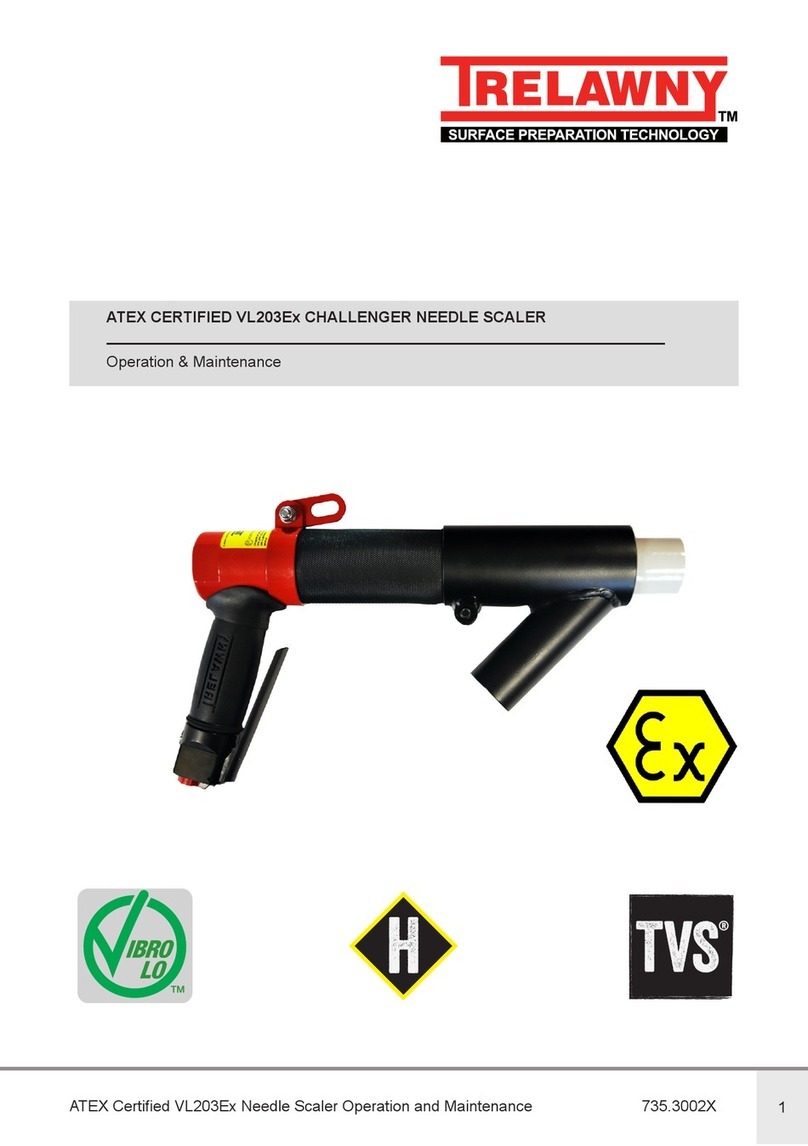
Trelawny
Trelawny VL203Ex Troubleshooting guide

Trelawny
Trelawny Vibro Lo Troubleshooting guide
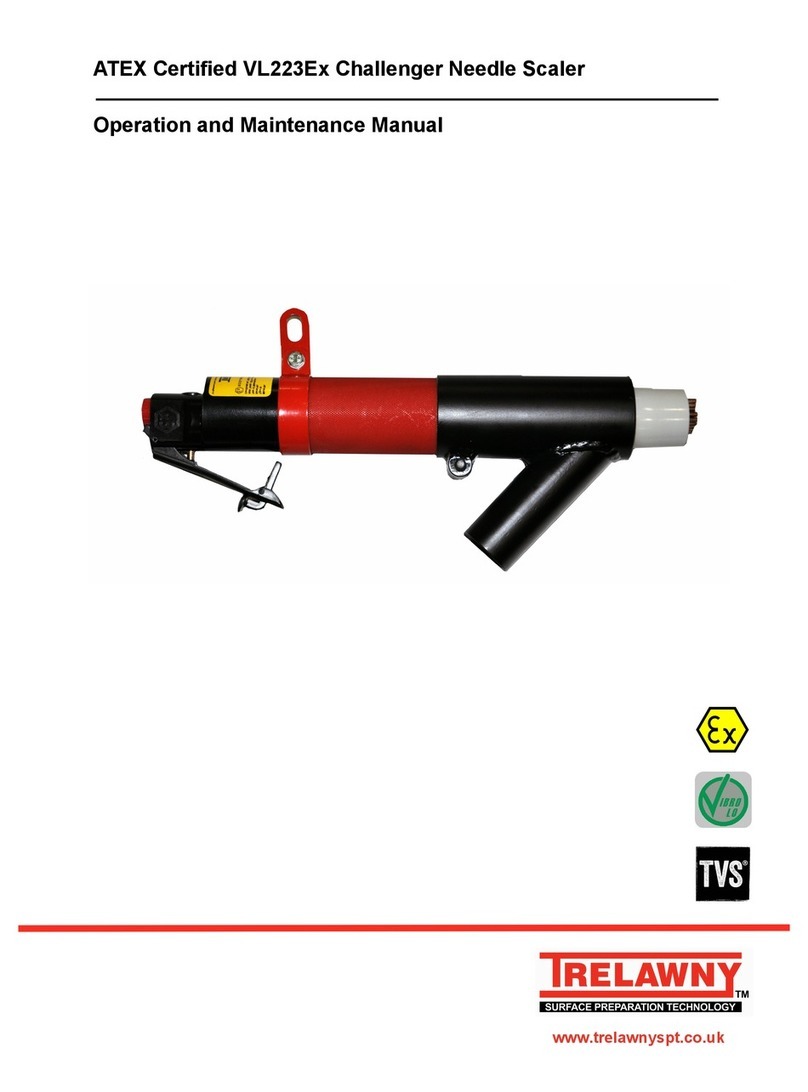
Trelawny
Trelawny VL223EX Series User manual
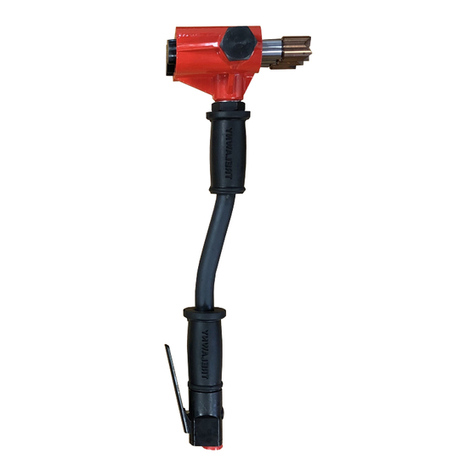
Trelawny
Trelawny SF3EX User manual

Trelawny
Trelawny Single Scaler Standard Duty User manual
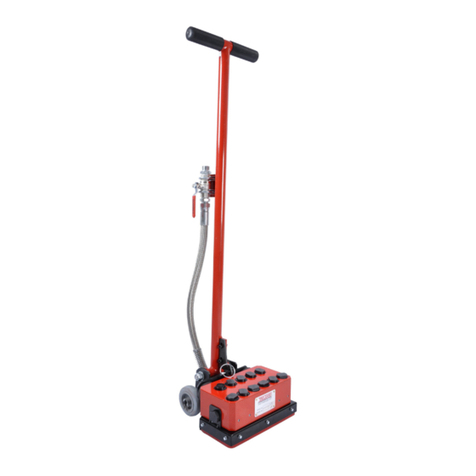
Trelawny
Trelawny SF11EX User manual
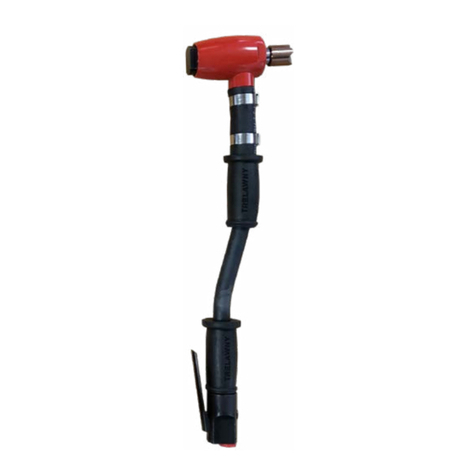
Trelawny
Trelawny VLSF1EX User manual

Trelawny
Trelawny LPS55 User manual
